(444 products available)






















































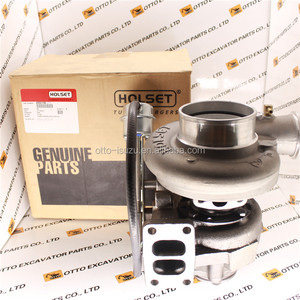
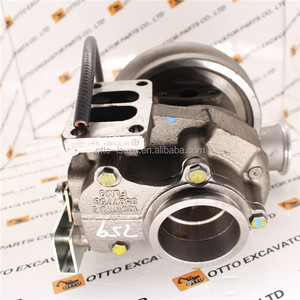












































































































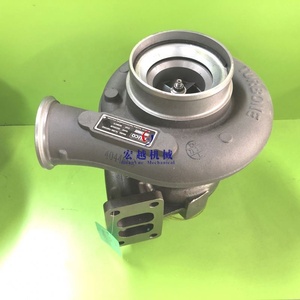
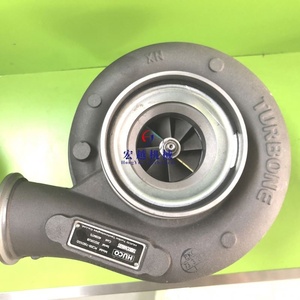


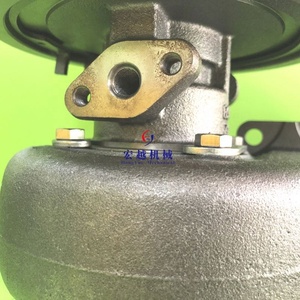







The PC200-3 turbo, also known as a turbocharger, boosts the engine performance of the Komatsu PC200-3 excavator by improving air circulation. This small but mighty machine increases the amount of oxygen available for the combustion of fuel. There are generally three ways to categorize turbo engines.
The above classification methods may help to understand the structure and working principles of the turbo more generally, but they are not commonly used in product descriptions. Most excavators do not care what type of turbo they have. What is more important is whether the turbo delivers enough compressed air to boost the engine's performance. Buyers may want to focus on the compatibility of the turbo with the excavator and its ability to achieve optimal engine performance.
The PC200-3 excavator has a few key features that provide a lot of digging power. It uses a powerful Komatsu SAA6D114E-1 diesel engine that provides steady performance for big jobs. The digging arm reaches out over 26 feet, allowing the machine to easily dig deep trenches in the ground. The attached bucket holds over 0.8 cubic yards of material, which adds to the excavator's capacity. On its rubber tracks, the machine rolls smoothly over any terrain while also being protected from the elements. These track pads offer strong ground contact and comfort at work sites. With its powerful engine, large reach, substantial bucket, and durable undercarriage, this excavator is legendary for handling tough digging jobs with ease.
Proper maintenance and care of the PC200-3 turbo are essential for its longevity, efficiency, and performance. Here are some tips to ensure its proper upkeep:
The PC200 excavator works in various industries and applications with different PC200 models that suit specific needs. Its versatility enables it to dominate many sectors, contributing to smooth project execution and making the most of time.
Infrastructure development
In construction and civil engineering, the PC200 excavator digs foundations meticulously. Its hydraulic attachments allow it to control and deal with earth and asphalt with precision and ease, letting it do a wide range of tasks like cutting, crushing, and sorting materials. With great ability to maneuver and abundance of functions, it achieves high efficiency in various infrastructure projects like building roads, bridges, and urban facilities.
Mining and resource extraction
In open-pit mining, the PC200 excavator moves earth and ore efficiently. If there are big rocks, it uses hydraulic hammers for breaking. During loading, it fills trucks with soil and ores rapidly. Also, Its excellent ability to maneuver in tight spaces makes it an important equipment for all tasks in the mining sector.
Land reclamation and environmental projects
The PC-200 excavator plays a key role in land reclamation by moving huge amounts of earth in landfill and leveling hills efficiently. In addition, it contributes to environmental protection by allowing the construction of drainage systems, water channels, and waste treatment facilities, thus enhancing urban infrastructure and safeguarding nature.
Agriculture and landscaping
In the agriculture and landscape sector, the PC-200 excavator shapes land by moving earth for planting fields, irrigation system installation, and garden projects. Its flexibility and attachment compatibility enable it to deal with various kinds of landscaping projects, from public parks to private estates.
Demolition and recycling
In demolition and recycling, the PC-200 excavator does building demolition safely and efficiently with precision attachments, such as shears and crushers. Its exceptional stability and load capacity make it suitable for heavy crushing and sorting tasks. As a result, the excavator contributes to material recycling and urban regeneration, handling demolition and disposal processes adeptly.
Material handling and port operations
The PC200 excavator serves as an essential machine for various port operations. It takes care of bulk material efficiently, whether loading, unloading, stacking, or reclaiming. With stable performance and flexible movement, the excavator contributes to handling containers and cargo, improving the workflow and productivity of the port significantly.
Before ordering PC200-3 turbo kits, the following factors should be considered:
Compatibility with existing equipment:
Ensure the new turbo has been designed to integrate with the current workings of the excavator.
Quality and warranty:
When it comes to excavator parts, selecting those with the right quality and durable performance is crucial. A part may be cheaper, but if it wears out quickly or needs to be replaced again because of poor installation, it is costlier in the long run. Many reputable manufacturers will offer a warranty on their products, which indicates they're confident in its quality.
Supplier's reputation:
It's essential to consider the reputation of the supplier when choosing the turbocharger for the PC200-3 excavator. Researching and selecting a well-known, trustworthy supplier can help ensure the product's authenticity and quality.
Price and delivery time:
While it may be tempting to go for the cheapest option, remember the importance of quality. Evaluate the price based on the product's quality, and consider the delivery time to ensure timely project completion.
Q1: What is the function of a Turbo in PC200 excavators?
A1: The Turbo, or turbocharger, increases the engine's power by improving its air intake. More air helps the engine produce more power without getting bigger.
Q2: How does the PC200-3 turbo work?
A2: The PC200-3 turbo works by using exhaust gases to spin a wheel that pumps more air into the engine. This process is called boosting and allows the engine to get more power from the same fuel.
Q3: Does the PC200-3 excavator have a turbocharged engine?
A3: Yes, the PC200-3 excavator has a turbo engine. The turbo helps the excavator have enough power for its digging jobs while keeping fuel use reasonable.
Q4: Can a damaged PC200 turbo be repaired?
A4: Some damaged turbos can be repaired, but assessing the damage and considering the cost of the repairs compared to replacing the turbo is crucial.
Q5: What are the signs of a failing PC200 turbo?
A5: Common signs of a failing turbo include a whistling noise, reduced engine power, oil leaks, or a check engine light. It's essential to have the turbo checked if any of these signs are present.